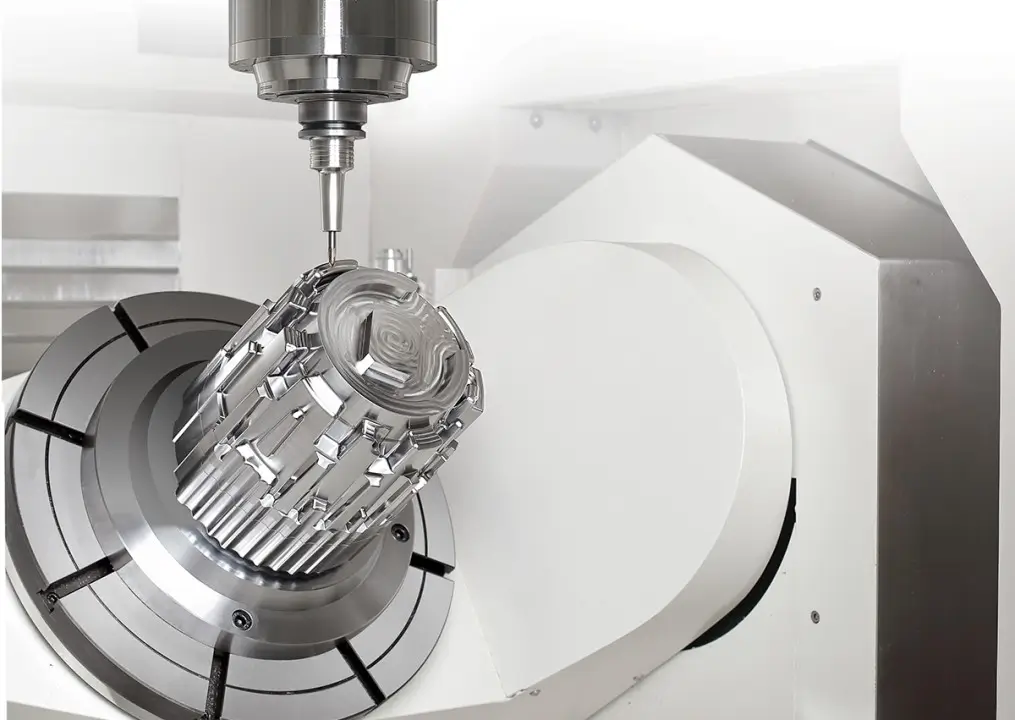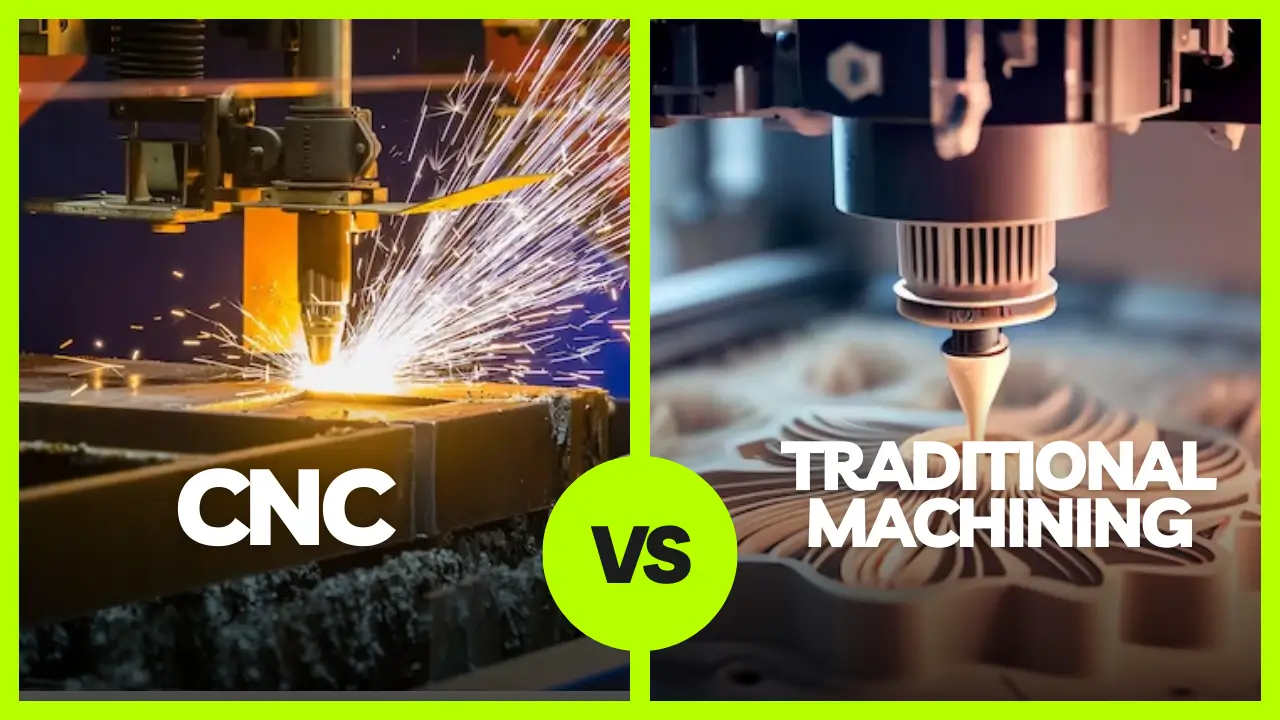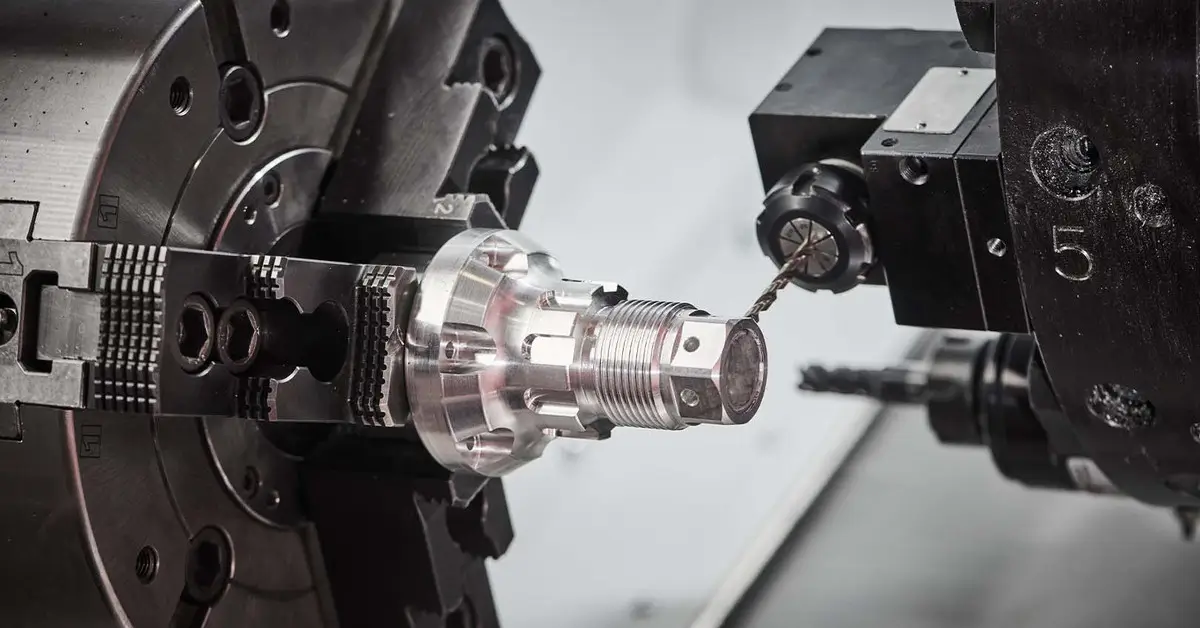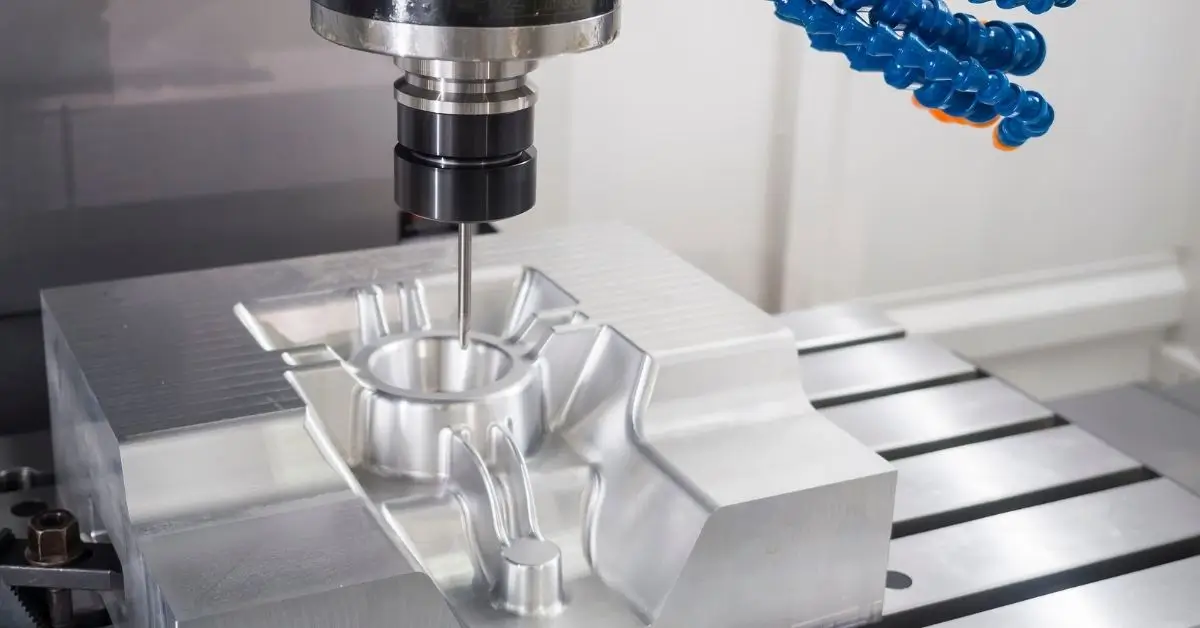Custom CNC prototype manufacturing allows for the creation of one-of-a-kind prototypes using computer-controlled machine tools tailored to meet specific design needs.
This tailored approach enables engineers and designers to generate exact prototypes for assessing and verifying a concept before full-scale manufacturing.
Custom CNC prototyping plays a pivotal part in new product development by delivering an affordable way to refine designs through iterative testing, compress project timelines, and guarantee that finished goods satisfy quality standards.
Producing initial prototypes this way cuts costs at the critical early design phases and facilitates refinement of intricate product aspects, whether refashioning minuscule mechanical components or reworking complete product ergonomics based on user experiments.

Understanding Custom CNC Prototyping
CNC (Computer Numerical Control) machining is a technique that utilizes machine tools directed by computer programs to sculpt and control raw materials into desired geometries.
Designers leverage Computer-Aided Design (CAD) applications to conceptually define components, which are then digitally coded by the CNC controller and used to precisely remove material from stock in order to fabricate complex parts.
The marriage of computers and machine tools that is CNC machining grants manufacturers previously unimagined production flexibility.
Through CNC, a vast array of rugged or delicate construction materials ranging from hardened alloys to engineered plastics to delicate wood veneers can be machined intricately as needed for aerospace structures, automotive drivetrains, customized medical equipment, and beyond.
The digital dexterity of CNC means one setup can yield iterations of a design easily, limited only by programmers’ visions and programmers’ skills at realizing them through automated machinery.
Also Read:
Importance of Customization in Prototyping
Customization plays a pivotal role in prototyping since each undertaking has its own exceptional plan and useful prerequisites.
While conformity is fundamental, variation is additionally essential. A one-size-fits-all way to deal with prototyping regularly leaves openings for improvement.
By personalizing CNC prototyping creation, models can be delivered explicitly catered to the uncommon necessities of the undertaking, guaranteeing synchrony with the last item’s plan from each edge and crevice.
This permits subtleties normally missed to come into undeniable quality, driving advances.
Besides aligning prototypes with a venture’s one-of-a-kind outline particulars, customized CNC rendering additionally encourages recognizing plan imperfections from various points of view, for example, measurements that miss the mark or structural vulnerabilities.
Such blunders can then be tended to before creation, precluding eventual outcomes later on. Changes are simpler to actualize amid early stages.
Also Read:High quality China rapid prototyping cnc machining services
Advantages of CNC Prototyping over Traditional Methods
CNC prototyping offers several key advantages over traditional machining methods, including precise replication and consistent production.
High tolerance manufacturing ensures uniform dimensions and accurate forms with each iteration.

In contrast to manual techniques demanding meticulous attention, CNC automation complete cycles in a fraction of the time.
This rapid prototyping allows for quicker validation and testing throughout the design process.
Complex internal and intricate external structures are also within reach, giving inventors liberty to realize even the most imaginative schemes.
Additionally, the malleable CNC approach permits bespoke modifications according to changing specifications.
Tailored renditions cater to diverse assignments, providing tailored remedies for varying projects.
With comprehension of custom CNC production capabilities, engineers can exploit this technology more productively.
Faster prototyping cuts expenses and improved quality accelerates products to market.
Key Considerations in Custom CNC Prototype Manufacturing
A. Define Requirements
Engage in collaborative brainstorming sessions and dialogues with all involved parties to deeply grasp the nuanced needs of the project.
Exchange insights through respectful discourse to cultivate shared understanding.
Clearly outline the purpose and intended function of the prototype through meticulous documentation, whether it be to rigorously test functionality, to captivate audiences with a compelling vision, or to glean insightful market feedback.
Tailor your material choice to perfectly align with the prototype’s purpose, applying robust metals where strength is essential or opting for lightweight plastics when mass matters most.
Consider each component and interface to harmonize form with functionality.
Precision and meticulous attention to detail are paramount!
Define the prototype’s exact dimensions and intricate geometric features with balanced consideration for both usability and aesthetic appeal to ensure your design vision shines through.
Also Read:

B. Research and Selection
Start your search on the internet!
Use industry directories, online resources, and recommendations to find CNC machining firms that specialize in crafting custom prototypes.
Consider their capabilities carefully to see if they are suitable for your specific needs.
Take a look at their online presence!
Inspect their websites thoroughly, browse through their wealth of past projects in detail, and read up on comprehensive case studies to determine if they are a good match.
Evaluate whether their expertise aligns with the requirements of your envisioned prototype.
Look under the hood extensively!
Assess their equipment, technology, and production capacity scrupulously to ensure they have what is indispensable to bring your prototype to fruition.
Consider whether their workshops have machinery and tools adequate for the tasks required.
Take a journey down memory lane!
Inspect extensively into their archive of past projects to ascertain if they have experience working on undertakings comparable to yours.
Determine if similar prototypes they have manufactured provide confidence they can repeat success for your vision.
Get the inside perspective! Reach out to various of their past clients or references to hear about their encounters and satisfaction with the company’s services in vivid depth.
Seek diverse viewpoints to gain a well-rounded impression of reliability.
C. Material Selection
Let’s delve into the specifics! Consider your prototype’s requirements – its mechanical properties, resistance to chemicals, and heat tolerance.
Varied sentences allow exploration from many angles.
Mind the monetary matters! Weigh the material options against your budgetary bounds, confirming selections won’t break the bank.
A frugal and prudent approach serves projects well.
Considering toughness, search for substances possessing a deft blend of strength and lightness, guaranteeing they can withstand life’s tests.
A balance between brevity and complexity offers perspective.
The process paramount!
Inspect ease of use with selected substances – smooth working benefits our skilled machinists, helping circumvent unforeseen obstacles on the road ahead.
Careful craft promotes successful outcomes.
D. Design Preparation
Crafting Precision: Bringing Your Prototype to Life with Detailed CAD Models
Let’s fire up the CAD software! We’ll sculpt intricate 3D models of the prototype, capturing every nook and cranny with precision.
It’s all about clarity! We’ll make sure these models are a mirror image of our final design, making communication with CNC machining pros a breeze.
We’ll tweak the geometry and fine-tune our toolpath strategies to slash machining time and minimize any excess material.
Efficiency is the name of the game!
We’ll sprinkle in some design for manufacturability magic, ensuring our designs sail through the CNC machining process with ease.
E. Tolerance and Precision
Let us delve into the specifics!
We shall cogently establish the limitation parameters for those vital geometries and features, guaranteeing a seamless integration akin to a well-oiled machine.
We must remain pragmatic!
We shall consider the production prowess of our computerized machining systems and the materials in question when establishing these constraint conditions.
Transparency is paramount!
We shall unambiguously communicate our precision necessities and quality benchmarks to our computerized machining associates, confirming a shared comprehension.
Two minds cooperate more proficiently than one alone!
We shall work synergistically with our machining collaborators to judiciously refine the tooling and fabrication strategies, so we can hit the desiderated standard of precision without undue effort.
F. Surface Finish
Let’s visualize the ideal aesthetic in intricate detail.
We’ll pinpoint the precise texture, appearance, and cosmetic excellence we desire for our prototype.
Both smooth and intricate, it will engage touch as much as sight.
It’s all about evoking the right sensations.
We’ll consider how it looks and feels, and how it performs under close examination, ensuring every subtle element is exquisitely balanced.
Let’s add the consummate flourishes.
We’ll select the most apt techniques—whether rubbing, buffing or sealing—to lend our prototype an effortless lustre.
Only the finest finishing will do.
Together we’ll closely coordinate with our expert CNC artisans to harmoniously integrate these flourishes into our production methods, preserving supreme quality at every stage.
Steps Involved in Custom CNC Prototype Manufacturing
A. Quoting and Cost Evaluation
To start, contact a handful of CNC machining companies to request estimates for your prototype project.
Acquiring pricing from multiple vendors enables a fair assessment of costs, production schedules, and the scope of support provided by each manufacturer.
Carefully scrutinize the estimates collected, taking into account expenses, anticipated lead times, and any extras incorporated into the bids.
A discerning examination of the offers will help ensure selection of a machining partner optimally equipped to fulfill the specifications of your endeavor within budget and timeframe constraints.

B. Quality Assurance Plan
Devise stringent evaluation protocols to certify the prototype satisfies your stringent requirements.
This necessitates crafting explicit evaluation rubrics customized to your endeavor’s particulars.
Unequivocally delineate the benchmarks for scrutinizing and trying the prototype.
This could involve dimensional exactness, material soundness, operational efficacy, and other such quintessential performance qualifiers.
C. Project Management
Establishing a schedule that provides checkpoints and objectives at regular intervals is imperative for staying on schedule and delivering results per the client’s requirements.
The timeline serves as a North Star, keeping the initiative navigating true as unforeseen obstacles arise.
Maintaining clear and frequent communication across all involved parties from project kick-off to completion is necessary for addressing hindrances swiftly and ensuring synchronization on progress.
Updates disseminated to leadership on a predictable rhythm facilitates prompt problem-solving and sustains alignment throughout.
D. Review and Iteration
Each iteration of the prototype was rigorously reviewed to validate the evolving design and functionality.
This iterative process facilitated important feedback and the opportunity for refinement to ensure the final product would satisfy expectations.
A comprehensive critique was presented to the machining provider based on a thorough prototype review.
This feedback pinpointed strengths as well as possibilities for enhancement, guiding subsequent refinements of the prototype to higher standards.
Constructive comments aided continued progress toward an optimal result.
E. Documentation and Intellectual Property
Maintain thorough logs of all structure refines and amendments enacted during fabrication.
Such records substantiate retraceability and assist potential later versions or adjustments.
Shield your groundbreaking property liberties by executing fitting precautions, for example non-divulgence understandings and patent entries.
These safeguard your conceptualizations and advances from sanctioned misuse or duplication.
Additionally, consistently refine and better items in a way that satisfies evolving client needs.
Consider utilizing input from a crosswise over assortment of partners amid the plan procedure to catch imperative points of view and advance included reasonable arrangements.
At long last, reliably screen contender action and industry patterns to distinguish openings for improvement or new item openings.
F. Post-Production Support
After delivering the prototype, address any post-production concerns or issues that arise.
Resolving such problems quickly helps sustain customer satisfaction and confirms the prototype fulfills its planned purpose.
Contemplate potential adjustments or added prototypes depending on responses and shifting demands.
This foresight guarantees your items persist competitive and applicable in the foreseeable future.
Feedback from initial prototypes often sparks refinements, so plan for evaluating feedback and selecting adjustments.
Navigating custom CNC prototype manufacturing with insight and adapting plans readily to feedback secures achievements in transforming abstraction into reality.
By smoothly addressing issues and cautiously considering refinements, satisfied customers and a well-honed final product can emerge from the prototype phase.
Challenges and Solutions in Custom CNC Prototype Manufacturing
A. Cost Considerations
One of the core difficulties in personalized CNC prototype manufacturing is successfully managing expenses.
CNC machining procedures can be pricey, particularly for intricate or large-scale initiatives, impacting the general project budget.
Processes to reduce waste, and making the most of economies of scale by simultaneously handling batches of several prototypes.
Additionally, collaborating intimately with CNC machining vendors to negotiate competitive pricing and investigate cost-saving options can assist mitigate budgetary restrictions.
Carefully planning the design process and parts requirements can also help preserve resources for more complex components.
Regular discussions with clients about needs and priorities helps maintain focus on the most vital aspects.
B. Lead Time Management
An additional notable hurdle involves administering head starts aptly to encounter venture cutoff times and buyer desires.
Postponements in model creation can upset thing advancement timetables and affect time-to-promote.
Receiving able venture administration rehearses is key for head start administration.
This includes building point by point venture calendars with clear milestones and cutoff times, intently checking advancement, and proactively distinguishing and tending to potential bottlenecks or postponements.
Additionally, taking advantage of progressed arranging and creation arranging devices can enhance work process proficiency and diminish head starts.
Furthermore, cultivating open correspondence and joint effort between venture partners and CNC machining suppliers can help streamline the creation process and guarantee well-timed conveyance of models.
C. Complexity Management
Custom CNC prototype manufacturing often involves dealing with complex geometries, intricate designs, and tight tolerance requirements, presenting challenges in machining and production.
Managing complexity requires a comprehensive approach that encompasses design optimization, process planning, and machining expertise.
Utilizing advanced CAD/CAM software enables designers to optimize designs for manufacturability, simplifying machining processes and reducing production complexities.
Additionally, employing innovative machining techniques and toolpath strategies can enhance machining efficiency and accuracy, even for highly complex geometries.
Collaborating closely with experienced CNC machining providers who possess the technical expertise and equipment capabilities to tackle complex projects is essential for successfully managing complexity in prototype manufacturing.
D. Quality Control
Ensuring quality control throughout the custom CNC prototype manufacturing process is a serious challenge.
To guarantee that high quality of the prototypes constructed and meet customers’ requirements, it is essential to develop a large number of measures.
First, it is necessary to install a quality control system covering the whole production process.
The companies must design and implement quality inspection requirements and procedures and ensure comprehensive testing through the dimensional and functional measurement of all products.
Adherence to the existing quality standards and regulations and extensive experience in quality control procedures is essential.
Furthermore, it is also important to purchase advanced inspection equipment which will ensure the highest indicators of the quality of the prototype and provide the opportunity to timely identify any deviation and defect in the specification.
Moreover, continuous development and improvement are important.
Therefore, the companies should develop an efficient feedback system which will provide opportunity to timely receive all necessary information and implement the required corrective action.
In such a way, it is possible to meet customer requirements and develop high-quality prototypes.
Developing and manufacture of a high-quality product is always a challenging task but, to guarantee that the custom CNC prototype documents meet the customer’s requirements and are of the high quality special measures are needed.
At the same time, these measures cannot be limited to the implementation of quality control measures solely since many other factors are involved and have an impact on the quality.
Such factors also need a thorough analysis and implementation of corrective actions.
Future Trends in Custom CNC Prototype Manufacturing
Let’s explore the future trends shaping custom CNC prototype manufacturing with a blend of professionalism and accessibility:
A. Advances in CNC Technology
As technologies progress continually, so too does the arena of personalized CNC pre-production manufacturing.
Developments in CNC engineering are revolutionizing how prototypes are conceived, formed, and tried.
One key driver moving this evolution forward is the acceptance of high-velocity machining procedures, permitting more rapidly and precisely formed pre-productions.
Furthermore, advancements in multi-dimensional machining abilities are broadening the possibilities for intricate geometries and designs.
Moreover, the integration of additive production methods, like 3D printing, with traditional CNC machining operations is unveiling new paths for innovation in pre-production manufacturing.
This hybrid approach combines the strengths of both methods, allowing for swift reworking and customization while maintaining the precision and surface finish of CNC-machined parts.
B. Integration of Automation and AI
Automation and artificial intelligence are bound to change the face of custom prototype manufacturing via computer numerical control in the upcoming years.
For example, robotic arms and machines with automated tool changers are in massive demand, as they simplify the production process and reduce the need for manual labor.
As a result, productivity and efficiency rates have skyrocketed.
It is also possible to use AI algorithms that help to optimize a variety of machining parameters, predict tool wear in advance, or detect flaws in the parts on the fly.
Such AI applications simplify process control and quality assurance.
On the other hand, the use of cobots or collaborative robotic solutions allows working in a safe and flexible factory.
As a result, it not only gets faster and more accurate to produce prototypes but far simpler for the manufacturers to solve generally complex design issues.
C. Sustainability Initiatives
While concerns regarding environmental sustainability accelerate, manufacturers increasingly focus efforts on sustainability within custom CNC prototype manufacturing.
Initiatives encompass reducing waste and energy use along with adopting eco-friendly materials and processes.
Green machining stands out as it implements optimized cutting strategies and recycling of machining fluids to curb environmental effects.
Moreover, the rise of digital manufacturing technologies allows manufacturers to refine designs and production upfront through virtual prototyping and digital twin simulations, lessening the need for physical prototypes and material waste.
In addition, following circular economy principles such as product reuse and remanufacturing gains interest as manufacturers strive to build closed-loop systems minimizing resource consumption while maximizing product lifecycle sustainability.
To conclude, advancements in technology, integration of automation and AI, and heightened emphasis on sustainability characterize custom CNC prototype manufacturing’s future.
By embracing these changes, manufacturers can stay ahead of the curve, providing high-quality prototypes fulfilling evolving customer and societal needs while reducing environmental impact.

